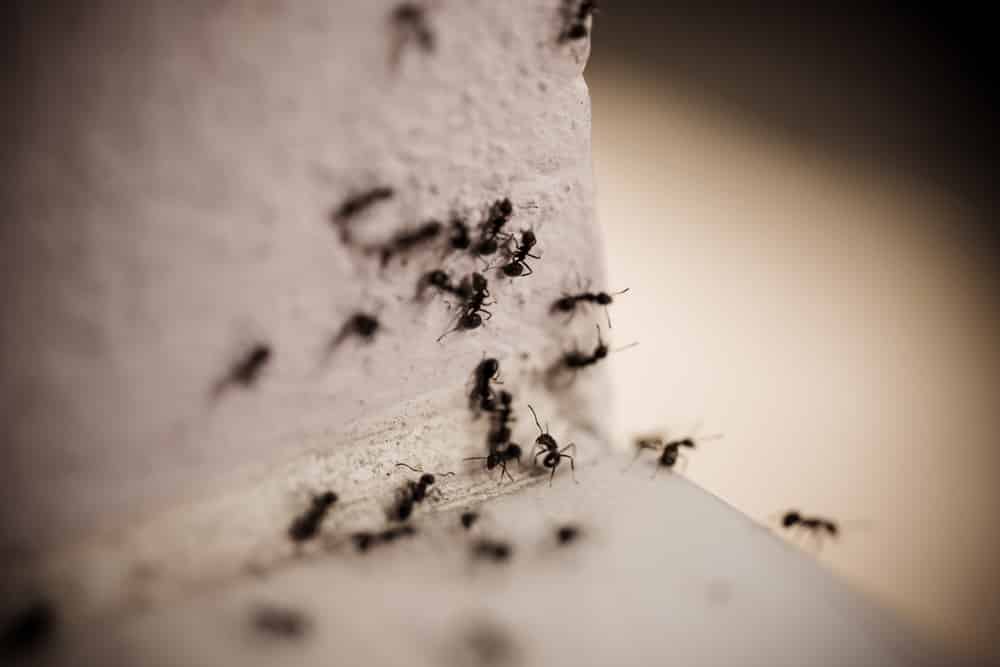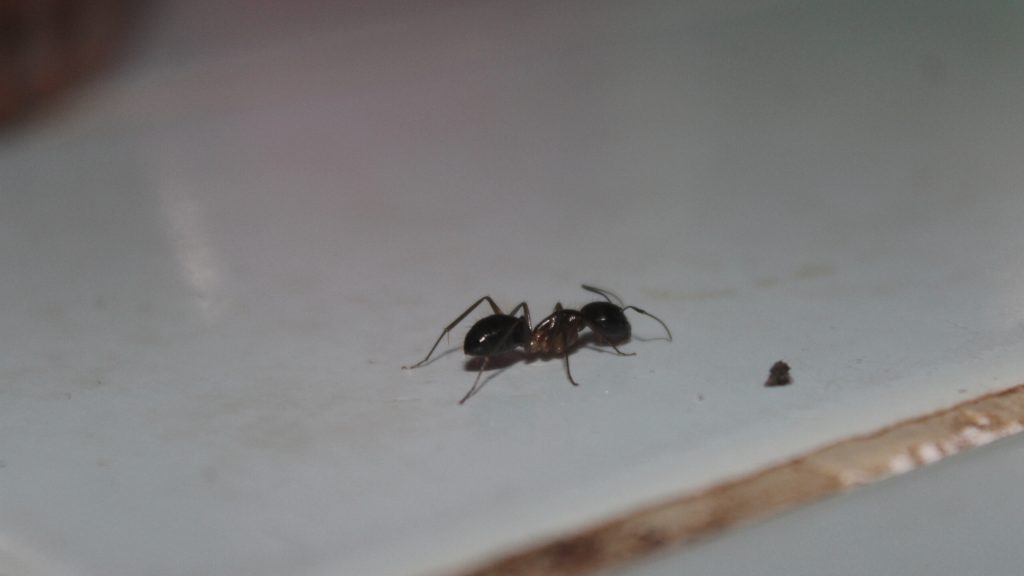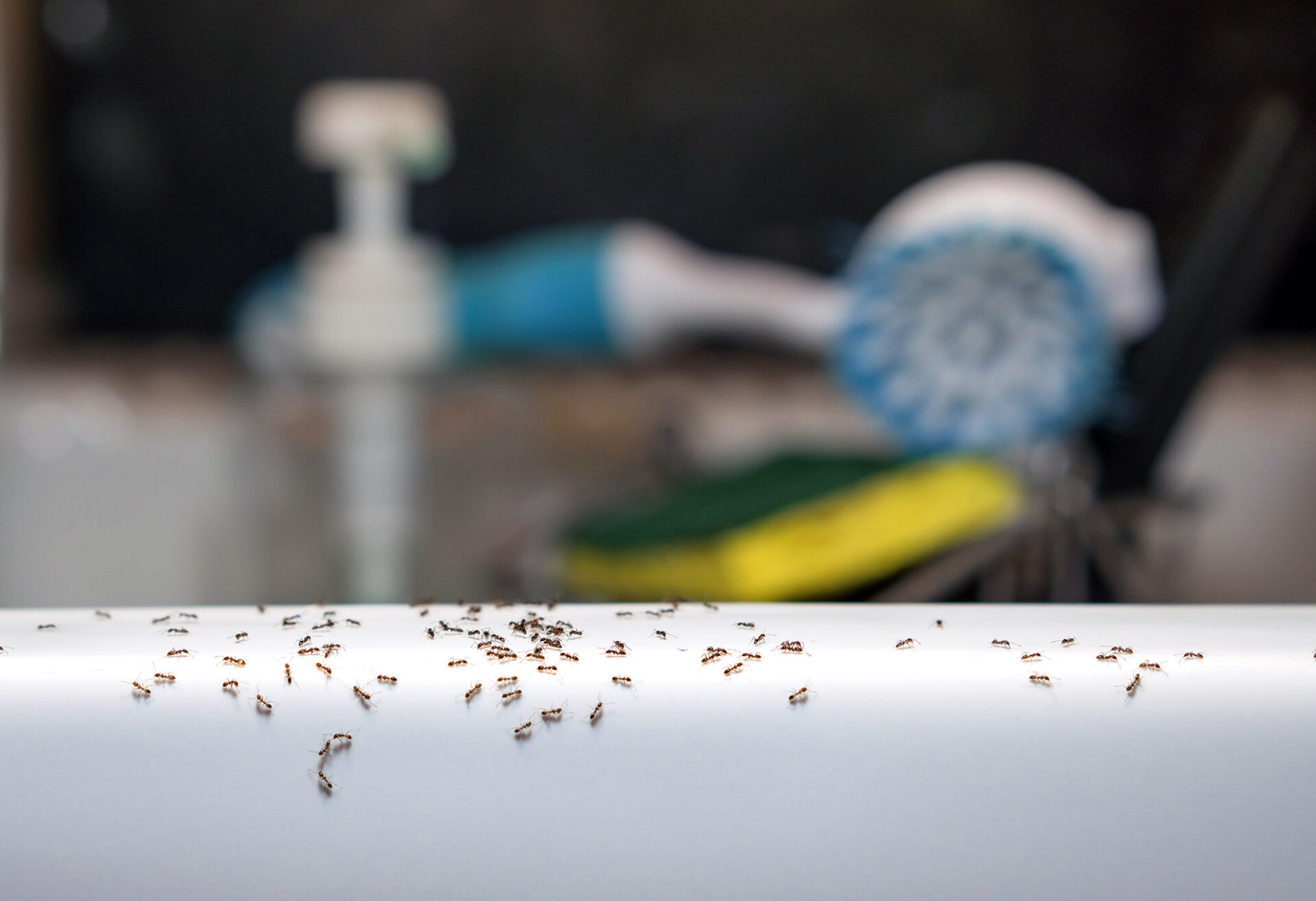Identifying the Ant Species: Small Black Ants In Bedroom

Small black ants in bedroom – Small black ants are a common sight in bedrooms, often causing annoyance and concern. These tiny invaders can be difficult to identify, as several species share similar characteristics. Understanding the specific ant species present in your bedroom is crucial for effective control and prevention.
Common Characteristics of Small Black Ants, Small black ants in bedroom
Small black ants, often referred to as “sugar ants” due to their fondness for sweet substances, share several common features that distinguish them from other ant species. These features include:
- Size: Typically 1/16 to 1/8 inch long, making them relatively small compared to other ant species.
- Color: Dark brown to black, although some species may have a reddish tint.
- Body Shape: Elongated body with a distinct waist, separating the thorax from the abdomen.
- Antennae: Bent or elbowed, with a series of segments.
While these features are common, it’s essential to delve deeper into the specific characteristics of different species to accurately identify the ants in your bedroom.
Small black ants in your bedroom can be a frustrating nuisance, but there are solutions! A good first step is to identify the source of their entry, which often involves a thorough cleaning. While you’re tackling the ant problem, consider refreshing your bedroom’s aesthetic with a blue and copper bedroom design scheme.
The calming blue hues paired with the warm, inviting copper accents can create a serene sanctuary, perfect for a good night’s sleep and a fresh start in the morning. Once the ants are gone and your bedroom is beautifully transformed, you can truly enjoy a peaceful haven.
Physical Features of Different Small Black Ant Species
Several small black ant species commonly found in bedrooms exhibit subtle differences in their physical features. These distinctions can help narrow down the identification process.
| Species | Size | Color | Other Features |
|---|---|---|---|
| Lasius neoniger (Black Pavement Ant) | 1/8 inch | Black | Smooth, shiny body; workers have a single node on their waist |
| Monomorium minimum (Minute Pirate Ant) | 1/16 inch | Dark brown to black | Tiny size; workers have two nodes on their waist |
| Tetramorium caespitum (Pavement Ant) | 1/16 to 1/8 inch | Dark brown to black | Workers have two nodes on their waist; antennae have 12 segments |
These are just a few examples, and other small black ant species may be present in your bedroom. Observing these subtle differences can provide valuable clues for accurate identification.
Behavior Patterns and Nesting Habits
The behavior patterns and nesting habits of small black ants vary depending on the species. However, some common characteristics are observed across these species.
Small black ants in your bedroom can be a nuisance, but they’re also a reminder that even in the smallest of spaces, life finds a way. Perhaps a touch of serenity from a dusty pink and blue bedroom could help you find peace amidst the chaos.
Remember, a little patience and persistence can go a long way in dealing with those tiny invaders, and eventually, you’ll find your bedroom back to its peaceful state.
- Food Preferences: Small black ants are attracted to sweet substances, such as sugar, honey, and fruit juices. They also consume proteins, fats, and dead insects.
- Nesting Sites: These ants prefer to nest in moist, dark, and secluded locations. Common nesting sites in bedrooms include under baseboards, behind furniture, in cracks in the floor, and in walls.
- Trail Formation: Small black ants often form trails to and from their nests, following scent trails laid down by other ants.
- Colony Structure: Small black ant colonies are typically organized with a queen, workers, and males. The queen is responsible for laying eggs, while workers forage for food and care for the colony.
Understanding the behavior patterns and nesting habits of small black ants can help you identify potential entry points and control their presence in your bedroom.
Understanding the Cause of Infestation

Small black ants, often called pavement ants, are a common sight in many homes, especially during warmer months. While they may seem like a minor nuisance, understanding the reasons behind their presence can help you effectively prevent future infestations. Ants are attracted to food sources, water, and shelter, and a bedroom can provide all three.
Identifying Potential Entry Points
Ants are remarkably resourceful when it comes to finding ways into your home. They can squeeze through the smallest cracks and crevices, making it essential to identify potential entry points in your bedroom.
- Window and Door Frames: Gaps around windows and doors are common entry points for ants. Check for any cracks, gaps, or damaged seals. Consider applying weatherstripping or caulk to seal these areas.
- Foundation Cracks: Foundations are prone to cracks over time, offering ants a direct route into your home. Inspect the foundation for cracks and seal them with caulk or concrete patching compound.
- Utility Lines: Pipes, wires, and other utility lines can create pathways for ants. Make sure these lines are properly sealed and insulated where they enter your home.
- Roof Vents: Roof vents, especially those that are not properly sealed, can provide access for ants. Ensure vents are in good condition and have secure screens.
Evaluating Ant-Attracting Conditions
- Food Sources: Ants are attracted to crumbs, spills, and even pet food. Regularly clean up any food messes, store food in airtight containers, and keep pet food bowls clean.
- Water Sources: Ants need water to survive. Make sure to fix any leaks, drips, or condensation issues in your bedroom. Keep the humidity level in your bedroom low.
- Clutter: Clutter can provide hiding places for ants and make it difficult to clean thoroughly. Keep your bedroom organized and free of clutter.
Effective Ant Control Strategies

Once you’ve identified the species of ant plaguing your bedroom and understood the root cause of their infestation, it’s time to take action. There are various effective ant control strategies available, ranging from DIY solutions to professional pest control services. This section will explore safe and effective methods for eliminating small black ant infestations in bedrooms, comparing and contrasting different ant control products, and providing step-by-step instructions on how to implement DIY ant control methods.
Ant Control Products
The market offers a wide range of ant control products, each with its own advantages and disadvantages. Understanding these differences can help you choose the best product for your specific needs.
Types of Ant Control Products
- Baits: Ant baits contain a slow-acting poison that ants carry back to their colony, effectively eliminating the entire nest. Baits are available in gel, liquid, and granular forms, and some are specifically designed for indoor use.
- Sprays: Ant sprays provide a quick and effective solution for killing ants on contact. They are available in various formulations, including aerosols, pump sprays, and ready-to-use bottles. However, sprays only kill visible ants and do not target the entire colony.
- Dusts: Ant dusts are typically used in areas where ants are commonly found, such as cracks and crevices. They work by creating a barrier that ants cannot cross. Dusts are effective against various ant species, but they can be messy and may pose a risk to pets and children.
- Traps: Ant traps are designed to attract ants and trap them within a sticky substance. They are often used in conjunction with other control methods, such as baits, to monitor ant activity and determine the effectiveness of your chosen strategy.
Factors to Consider When Choosing Ant Control Products
- Target Species: Different ant control products are formulated to target specific ant species. Choose a product that is specifically designed to control small black ants.
- Safety: If you have pets or children, choose products that are safe for them. Look for products that are labeled as “pet-safe” or “child-safe.”
- Effectiveness: Read product reviews and compare different brands to determine the effectiveness of each product.
- Ease of Use: Choose products that are easy to apply and use, especially if you are not comfortable with DIY pest control methods.
DIY Ant Control Methods
DIY ant control methods can be effective in eliminating small black ant infestations, especially when combined with other control measures. These methods are often less expensive than professional pest control services, but they require time and effort to implement effectively.
Step-by-Step Guide to DIY Ant Control
- Identify the Ant Trails: Carefully observe the areas where ants are entering your bedroom. Look for ant trails along walls, baseboards, and under furniture.
- Locate the Nest: Try to locate the ant nest by following the ant trails. Nests are often found in dark, damp areas, such as under sinks, behind appliances, or in cracks in the foundation.
- Seal Entry Points: Once you’ve located the ant trails and nest, seal any entry points that ants are using to enter your bedroom. This can be done by using caulk, sealant, or weather stripping.
- Apply Ant Baits: Place ant baits along the ant trails and near the nest. Follow the instructions on the product label carefully.
- Clean Up Spills and Crumbs: Ants are attracted to food and spills, so make sure to clean up any spills or crumbs promptly. Store food in airtight containers to prevent ants from accessing it.
- Keep Your Bedroom Clean and Dry: Ants are attracted to moisture, so keep your bedroom clean and dry. Wipe down counters and floors regularly, and fix any leaks or plumbing problems promptly.
- Monitor and Repeat: Monitor the ant activity after applying baits and sealing entry points. If you see ants continuing to enter your bedroom, repeat the steps above.
Important Considerations for DIY Ant Control
- Safety: Always follow the instructions on the product label carefully and wear appropriate protective gear when using ant control products.
- Patience: It may take several weeks for DIY ant control methods to be fully effective. Be patient and consistent with your efforts.
- Persistence: Ants are persistent creatures, so it’s important to stay vigilant and repeat your efforts as needed. If the infestation persists, consider contacting a professional pest control company.
